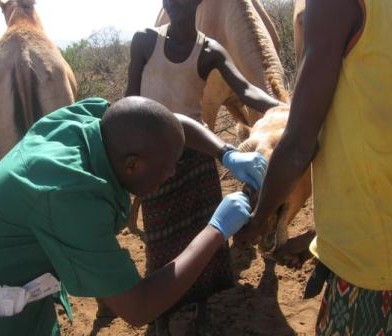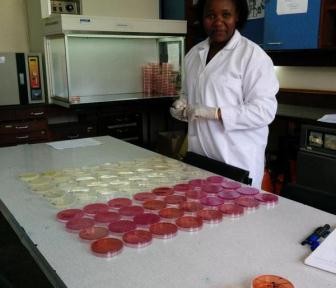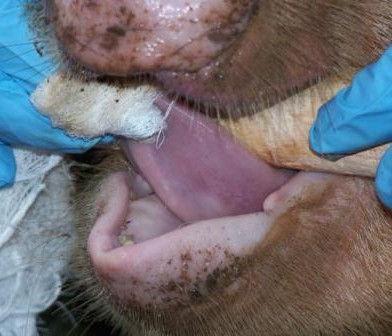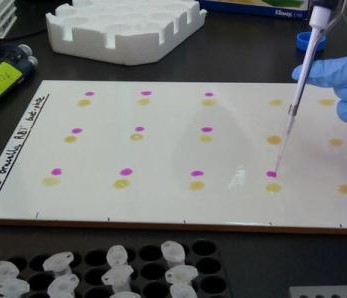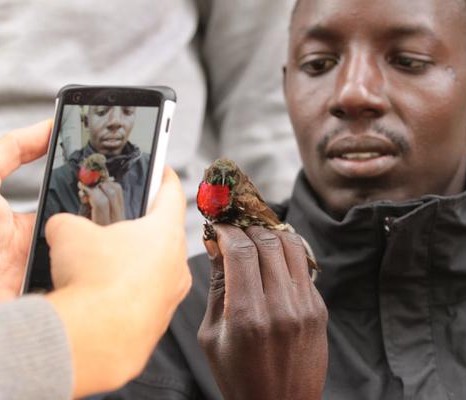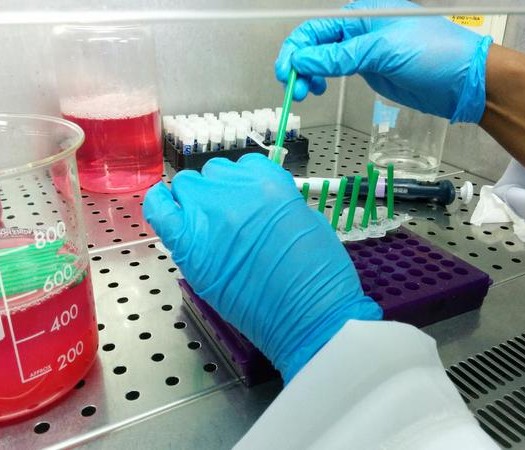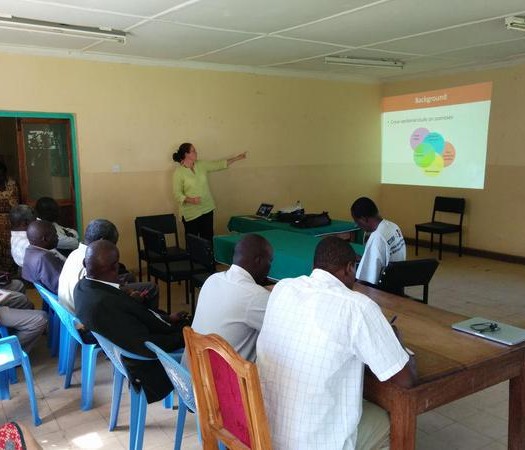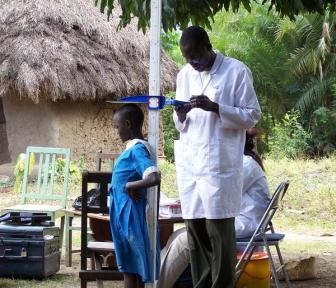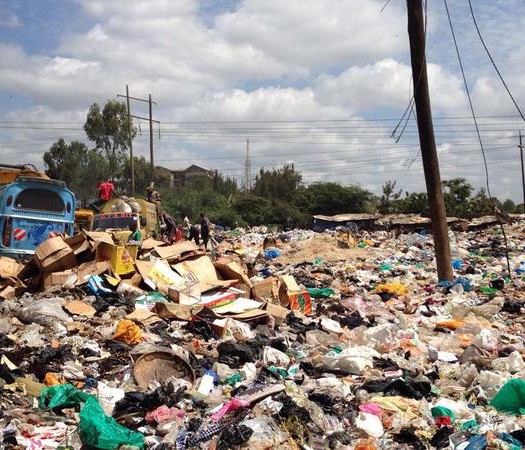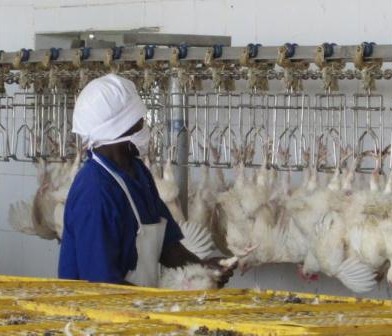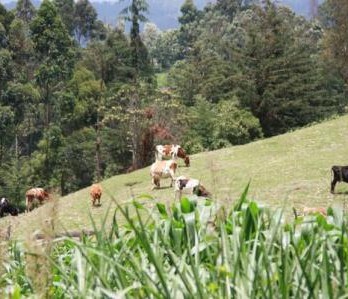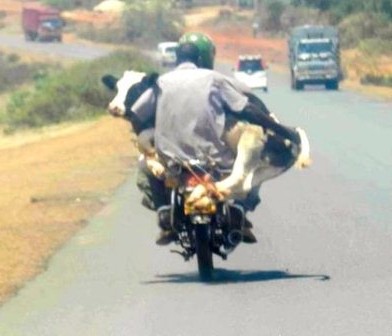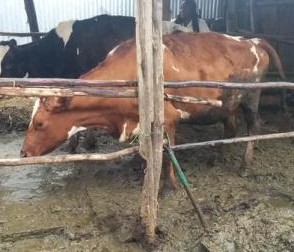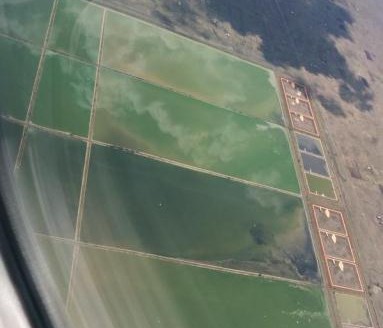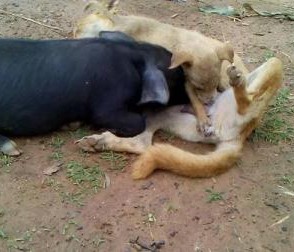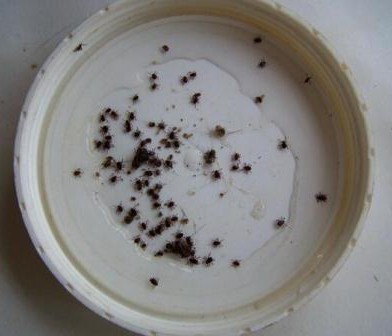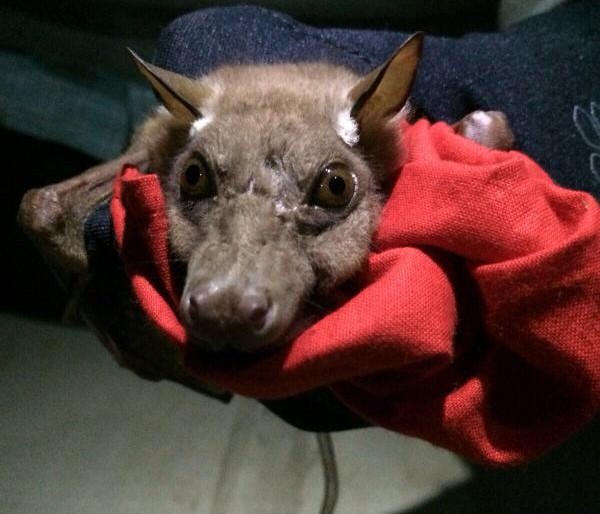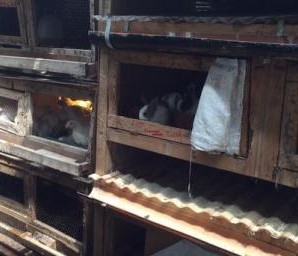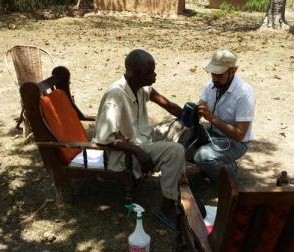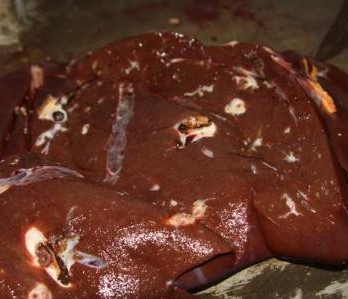Busia County, in Western Kenya is the main research area for the People, Animals and their Zoonoses (PAZ) project. Farmers in this County and its environs are slowly adopting pig farming as an alternative way of earning their livelihoods. There is close interaction between pigs and people as they are either tethered within the homestead or are allowed to scavenge around the homestead for food. In some homes, pigs wallow in mud mixed with their urine and faecal materials, as flies and other insects celebrate. The role played by pigs in transmitting zoonotic diseases and the risk factors for human infection are poorly understood in western Kenya. Therefore, the outcome of the PAZ project, a collaborative project between the University of Edinburgh, ILRI and Kenya Medical Research Institute (KEMRI) (funded by the Wellcome Trust), will be vital in highlighting some of these factors.
Most of the pigs are sold to the local butcher men and are consumed locally. As you can see in the picture below, transportation to the slaughter slab leaves more questions than answers. One would think that what is firmly tied with a rubber and sometimes covered with a few leaves at the back of the bicycles is an already slaughtered animal, until you see the pig moving its head up and down struggling to be free.

The methods of slaughter used in slabs in the area also raise welfare issues. The pig’s legs are tied and a sharp knife or a machete is used to cut around the neck of a struggling pig that cries loudly as blood spills on the bare hands and feet of the unprotected slaughter men. The noise that emanates from these slabs is normally disturbing for many people.
It is normal to find people slaughtering without protective clothing, and dogs are always on duty waiting for any meat that could drop; and of course you cannot rule out the presence of flies. It is also not uncommon to find children and people eating other foodstuffs next to the slab, an obvious public health hazard. This means that the hygiene and safety of the slaughter house workers and the pork consumers served by the slabs is an issue that requires action.

Lian Doble, a PAZ project scientist, as well as other project staff, visited several of the porcine slabs during 2010-2011, and were alarmed by the lack of safety measures in most of them. In June 2011, gum boots were donated which will help improve the safety of the slab workers, and hygiene and safety sensitization days were carried out for the workers.
One of the many important aspects of the PAZ project is to gain an understanding of the epidemiology of cysticercosis in human and porcine populations, cysticercosis is a zoonotic parasitic infection caused by the tapeworm Taenia solium. We sample blood from pigs before they are slaughtered and also perform lingual palpation in order to detect the presence of cysts. The samples are processed in the laboratory and the data analyzed to determine what the risk of transmission of the parasite is in the local food chain. The outcome of this project will provide useful information which we aim to translate into better policies and disease control. Another important development in the project is a specific set of research questions aiming to understand and prevent diseases that affect the slaughterhouse workers themselves, as a result of their occupational exposure to animal products. This part of the project is now underway, and will highlight risks posed to this worker community and bring attention to better controls.
About the author
 James Miser Akoko (jamesakoko(at)yahoo.com), is an animal health technician with the PAZ project. He has been working with the project for four and a half years and previously worked with the IDEAL project, which was based out of the same laboratory. His main interests lie in the epidemiology of zoonotic diseases, and he has a specific interest in Brucellosis: currently he is undertaking his own PAZ-linked project researching the epidemiology of caprine infection with Brucella melitensis in Western Kenya.
James Miser Akoko (jamesakoko(at)yahoo.com), is an animal health technician with the PAZ project. He has been working with the project for four and a half years and previously worked with the IDEAL project, which was based out of the same laboratory. His main interests lie in the epidemiology of zoonotic diseases, and he has a specific interest in Brucellosis: currently he is undertaking his own PAZ-linked project researching the epidemiology of caprine infection with Brucella melitensis in Western Kenya.
The Zoonotic and Emerging Disease group studies a range of epidemiological issues revolving around the domestic livestock, wildlife and human interface



